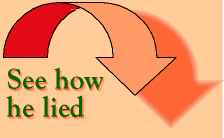 | [verbatim trial transcripts]
AUSCHWITZ DOCUMENT 'SHOWS GENOCIDAL USE', COURT TOLD Friday, January 28, 2000 An internal Auschwitz document which ordered that building plans for the crematoria at the camp were to be kept secret showed that they had been "committed to genocidal use", the High Court heard today. The existence of the "house order", dated May 5, 1943, emerged during historian David Irving's cross-examination of Auschwitz expert Professor Robert van Pelt, who is giving evidence for the defence in Mr Irving's libel action over claims that he is a "Holocaust denier". Prof van Pelt told Mr Justice Gray that the first trial gassing in Crematorium Two -- where ultimately 500,000 people were to die -- took place in March 1943, with nearly all the crematoria in operation by May. During 1944, he added, there were seven gas chambers in use at the camp. Mr Irving, who accepts there were gassings on a limited basis but denies the existence of "factories of death", said that the order covered blue-prints for the crematoria. It read: "It must be pointed out that we are concerned here with works that are connected with the war economy and are to be kept secret. In particular, plans for the crematoria are to be kept under the strictest surveillance..." It said that in connection with the building works, a responsible construction leader had to give instructions to the prisoner inmates on the spot and that the original plans were to be kept "under lock and key". Mr Irving asked if the professor could see "no harmless reason" for such a regulation. Prof van Pelt said: "I can't see what the problem would be so it's remarkable that the crematoria seem to be designated here with a particular type of internal security clarification." He added: "The Germans certainly had reason to be ashamed of the homicidal use of the buildings ... the date is May 5, 1943 - revealing that by this time all these buildings had been committed to genocidal use." He speculated that once this happened, someone must have decided that any leak of the information to the outside world must be prevented. He said it was known from eye-witness testimony that a Czech female member of the camp resistance did steal some plans in 1944 and smuggle them out. Prof van Pelt agreed that none of the blue-prints showed any modification to create holes in the roof necessary for the introduction of cyanide into the chambers. Mr Irving, who says that the apparent lack of such holes means that genocidal gassing did not occur, said that he would abandon his action tomorrow if the Auschwitz authorities would agree to clear the rubble from the ruined crematoria and find the holes. Such a move, he said, would thwart neo-Nazis who currently benefited from the existence of doubts over the gas chambers. Prof van Pelt said that the condition of the site was such that it was unlikely that one would find an intact slab to inspect. Mr Irving, the 62-year-old author of Hitler's War, is seeking damages over American academic Deborah Lipstadt's 1994 book, Denying The Holocaust: The Growing Assault On Truth And Memory. Accused by the defendants of being "a liar and a falsifier of history", he depends on a 1988 report by a man called Fred Leuchter, who has taken samples from ruins at Auschwitz and concluded that there were never homicidal gas chambers there. Mr Irving says Prof. Lipstadt's book has generated "waves of hatred" against him. The hearing was adjourned until Monday.
|
January 28, 2000 | |
London
Worked until 4 a.m. completing eight sets of photos for the court, today's hearing. Bed at 4:10 a.m., up at 7:50 a.m., to take Jessica to school. With Kevin Macdonald to High Court at 9:15 a.m.; court rose at 10 a.m., and sat until 3:30 a.m. Straight away Rampton rose and tried to get MacDonald's evidence thrown out, as it had, he said, no bearing on the case. I said that I would be putting to the professor three or four documents on Monday which would show precisely what the link was. I then I put to the judge my submissions about the enhanced burden of proof based on the Rhesa case (Cross) and I believe he began to appreciate that, although Rampton argued that the proof required for the Auschwitz issue was the old level, not the enhanced level required in aggravated libels. [Professor Robert] Van Pelt then showed the court an interesting computer-generated "walk through" of Krema II and Krema IV; once or twice I stopped him and made interjections, it was after all technically my cross-examination of him that he was using for this slide show. When he showed the Krema II from outside the far end of the (below ground) Leichenkeller, with the new staircase right in front of us, it looked so obviously like any grassy-mound-covered air raid shelter I had seen that I asked him what kind of door was to be found at the foot of those stairs into the Leichenkeller 1; he said, none was found. I said, "It could have been a standard LS-Keller door with peephole then, couldn't it?" and left that idea festering in the judge's mind. He paid close attention to the way a double door had been moved from opening into the Leichenkeller 1 to opening out of it on a drawing (Deckblatt) by [Walter] Dejaco himself in Dec 1942. I asked the judge's permission to make a close inspection, and pointed out that the new drawing showed the doorway with a rebated edge to the door jambs (frame), indicating that the new doors would fit into the snugly as if to withstand (air blast) pressure. He confirmed again today that the only evidence for the homicidal use of the Leichenkeller as what I insisted on calling a "factory of death" is eye-witness, i.e. anecdotal evidence. Mysteriously he did not mention [Rudolf] Hoess as a source, or [Kurt] Aumeier. On the [Krema II] chimney stack, I asked him when cross examination resumed what the length of the flame path from the furnace through the tunnels to the tip of the chimney would be, and we reached a length of over 100 feet. At the right moment I then pointed out that flames of that length were impossible, so the 1945/46 Olere drawing showing flames and smoke belching from the chimney was quite fictitious. I said that the efficient German design also had the usual smoke traps installed. I now put to him the original 3 foot square prints [by the US National Archives Cartographic Branch] of the original negatives of the aerial photos, and asked him to confirm that they were all taken in 1944. Then I asked him to find "holes" or "smudges" on any of the Kremas visible on those prints whatsoever. We reverted to the "holes" again, to ensure the judge got the point. I said, "If the Polish authorities will now scrape the topsoil and gravel off that slab and find the holes, I am ready and willing to drop this case the very same day!" At this there were nervous sniggers from the (I am told) largely Jewish public galleries. I saw a rather grey, gaunt, and withered Sir Martin Gilbert amongst them, and Dr Thomas Stuttaford the famous Times doctor was also present. I asked Pelt his general view on eye witnesses, and would he believe in them so firmly if his name was Ivan Demjanjuk, who was nearly hanged on the evidence of twelve such men, and rescued only by the brave Israeli judges who threw out the evidence and conviction. Just before lunch, Rampton succeeded (I forget how) in putting to him the May 5, 1943 document, the Hausverordnung, specifying enhanced security for drawings of crematoria, "because of the wehrwirtschaftlich importance of the Arbeiten" going on there. I protested of course at this kind of procedure, and Pelt (foolishly for him) admitted he had long been aware of the document but (as I pointed out at once) had discarded it as of no probative value. Unfortunately for Rampton, only half an hour earlier, Pelt had dwelt at length on the Goldarb[eit] room in Krema II and Krema III, and I had (anticipating precisely this) willingly conceded that the "Ofen" in one corner of the Goldarb. Room stood for Schmelzofen. This was a delicious defeat for Rampton. It went in stages: I asked Pelt, "Could it be said that the genocide of the Jews and others in any way contributed to the German war economy [Wehrwirtschaft]?" Pelt, puzzled: "No." Then, I pointed out, this enhanced security measure was not designed to conceal the genocide from prying eyes, was it -- it was some Arbeit specifically contributing to the economy, and that could only be the reference to Goldarb. The judge clearly accepted this point, and Rampton almost tore up his prize exhibit in rage. After lunch I asked about the Soviet mission 1945 report on Auschwitz, Nuremberg exhibit USSR-008, and got Pelt to confirm that two of its authors were also signatories of the notorious Katyn investigation, and that [Trofim] Lysenko the crazy biologist was another. This clearly rattled him, and impressed the judge. I asked Pelt how often he had been to Auschwitz, "Once or twice" in his life? He said, "No, virtually every year for many years." I inquired why temptation had not got the better of him, to take a trowel, knowing where those holes should be, and to scrape away the gravel and find at least one "prefabricated hole" to confound us "revisionists." He said that would be improper -- to interfere with such a holy site. I said, referring to [Fred] Leuchter, "Well one of us did that kind of thing, didn't he!" Asking what an air fare to Warsaw or Krakow would cost, I again said I would drop the whole action if he found even one hole, and the judge said I had made my point, in his view (i.e. proceed). That concluded my cross examination. Just at the end of his re-examination, Rampton threw in the second new surprise-document (the Zamosc one I referred to in the message to my Inner Circle yesterday). Rampton revealed that they had received it only yesterday "from an anonymous source". At this I rose and firmly protested: this document, I said, had been received by me from them at 1 p.m. yesterday (and marked as such); it was clearly wrong for Rampton to introduce fresh documents like this in a re-examination, to which I could not answer, and the proper place is many weeks hence, after I have had time to examine it from every angle particularly as to its integrity. Mr Justice Gray allowed that objection at once, and the document was put away; Gray confirmed that he had not, and would not, read it. -- On that note Pelt was released from the witness stand. Back to Duke Street...
Almost at once Mr Sharon Sadeh and Tom Segev,
both of Ha'aretz,
arrived to interview me; considerably more fun that Eric
Silver yesterday, though their final reports will
undoubtedly express the same line. Pre-empting their
inevitable accusations, I said [like Dr Samuel
Johnson of John Wilkes]: "The charge of
anti-Semitism is the last resort of the Jewish scoundrel."--
I then slept for two hours on the sofa. | |
 See
how this journalist has bent the truth. See the Radical's
Diary version of what really happened:
See
how this journalist has bent the truth. See the Radical's
Diary version of what really happened: